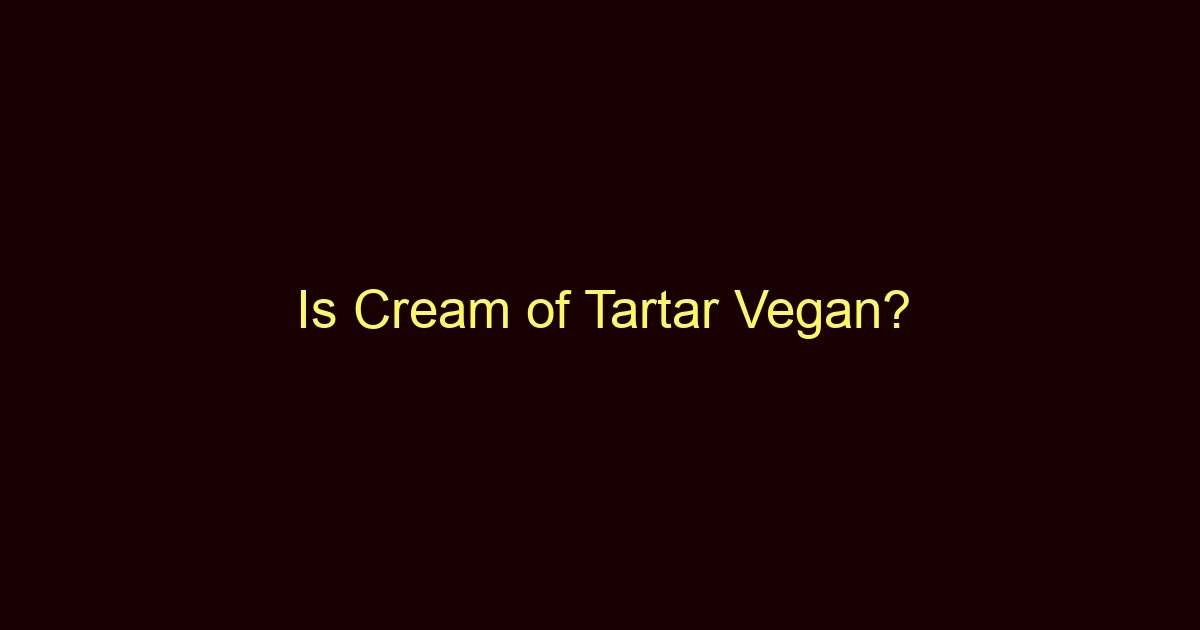Yes, Cream of Tartar is vegan. It is a byproduct of the wine-making process and doesn’t involve any animal derivatives in its production or processing.
Cream of Tartar is an ingredient we often encounter in recipes, particularly in baking. But what is it exactly, and for those leading a vegan lifestyle, is it safe to include in your culinary creations?
What Is Cream of Tartar Made Of?
Cream of Tartar, also known as potassium hydrogen tartrate, has a long history in the culinary world. At its most basic level, Cream of Tartar is an acid. But not the kind you might immediately think of, like citric or acetic acid. Instead, this particular acid is a byproduct that forms during the fermentation process of grape juice into wine. Over time, sediments form on the bottom of wine barrels. This sediment, called tartaric acid, is then cleaned and processed to produce the fine, white powder we know as Cream of Tartar.
Given its acidic properties, Cream of Tartar often stabilizes egg whites in recipes, especially for meringues and angel food cakes. This ingredient can be quite the baking hero by providing more volume and preventing the formation of sugar crystals. Outside of baking, Cream of Tartar is also known to be an effective cleaning agent. Its slightly abrasive nature can help in removing stains from metals and porcelain.
While Cream of Tartar isn’t consumed in large amounts, it does have some health benefits. It’s rich in potassium, which is essential for muscle function and maintaining a proper electrolyte balance in the body. However, consuming it in large amounts can be detrimental, as it can lead to hyperkalemia, a condition characterized by excessive potassium in the blood.
Cream of Tartar Common Used Ingredients List:
- Potassium Hydrogen Tartrate: The primary and essential component of Cream of Tartar. This naturally occurring substance provides the acidic nature of the ingredient, making it useful in various culinary applications.
- Starch (sometimes): Some commercially produced Cream of Tartar may contain a bit of starch. This addition is generally used to prevent clumping and improve its flow. While most starches are vegan, it’s always a good idea to check the label if you’re concerned about the source.
Is Cream of Tartar Vegan?
Yes, Cream of Tartar is vegan. Its primary source is from grapes, specifically during the wine-making process. No animals or animal-derived ingredients are involved in its production. When grapes are fermented to produce wine, the residue or sediment that forms contains tartaric acid. This residue is then processed and refined to produce the Cream of Tartar we use in our kitchens.
While the ingredient itself is vegan, there might be ethical considerations in terms of its production. For instance, if you’re a vegan who avoids products that have been tested on animals, you might want to delve deeper into how the Cream of Tartar is produced. The wine industry, from which Cream of Tartar originates, has its own set of ethical considerations, including environmental impacts and labor issues.
For those keen on ensuring their Cream of Tartar is 100% vegan, opting for organic brands or those that specifically mention being vegan-friendly might be worthwhile. While the inherent nature of Cream of Tartar is vegan, additives or processing agents might not always align with vegan principles.
Final Thoughts
Cream of Tartar, a unique byproduct of the wine-making process, holds a significant spot in our culinary world. Not only is it valuable in achieving the right texture and consistency in various dishes, but it also boasts some health benefits due to its potassium content.
For vegans, the good news is clear: Cream of Tartar is plant-based, deriving from the humble grape. However, as with any ingredient, it’s essential to remain informed. If you’re committed to a vegan lifestyle, ensure that your chosen product aligns with your values by checking its sourcing, processing, and additional ingredients.
In the end, the world of ingredients is vast and fascinating. And understanding each one not only makes us better chefs but also more conscious consumers.

